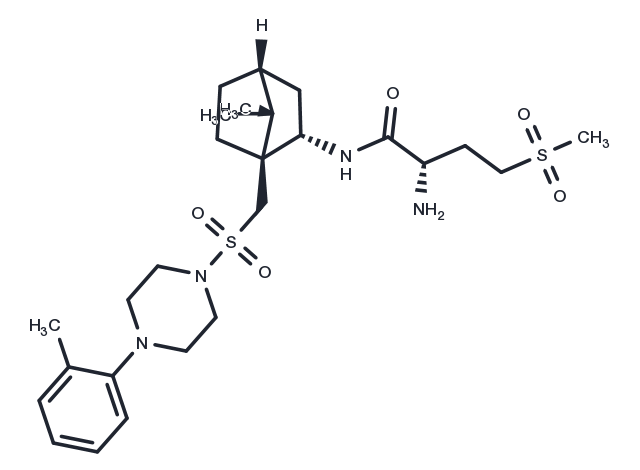Powder: -20°C for 3 years | In solvent: -80°C for 1 year


L-368899 is a non-peptide and orally active antagonist of oxytocin receptor (IC50: 8.9 nM). It displays 40-fold selectivity over vasopressin V1a and V2 receptors (IC50: 370 and 570 nM respectively).

| Pack Size | Availability | Price/USD | Quantity |
|---|---|---|---|
| 100 mg | Inquiry | Inquiry | |
| 500 mg | Inquiry | Inquiry |
| Description | L-368899 is a non-peptide and orally active antagonist of oxytocin receptor (IC50: 8.9 nM). It displays 40-fold selectivity over vasopressin V1a and V2 receptors (IC50: 370 and 570 nM respectively). |
| Synonyms | L 368899, L 368,899, L368,899, L-368899, L368899, L-368,899 |
| Molecular Weight | 554.77 |
| Formula | C26H42N4O5S2 |
| CAS No. | 148927-60-0 |
Powder: -20°C for 3 years | In solvent: -80°C for 1 year
You can also refer to dose conversion for different animals. More
bottom
Please see Inhibitor Handling Instructions for more frequently ask questions. Topics include: how to prepare stock solutions, how to store products, and cautions on cell-based assays & animal experiments, etc.
L-368899 free base 148927-60-0 L 368899 L 368,899 L368,899 L368899 free base L-368899 L368899 L-368,899 L 368899 free base inhibitor inhibit
